Top 45 Greatest Constructions of Gothic Architecture in World | What Is Gothic Architecture | Unique Features Of Gothic Architecture
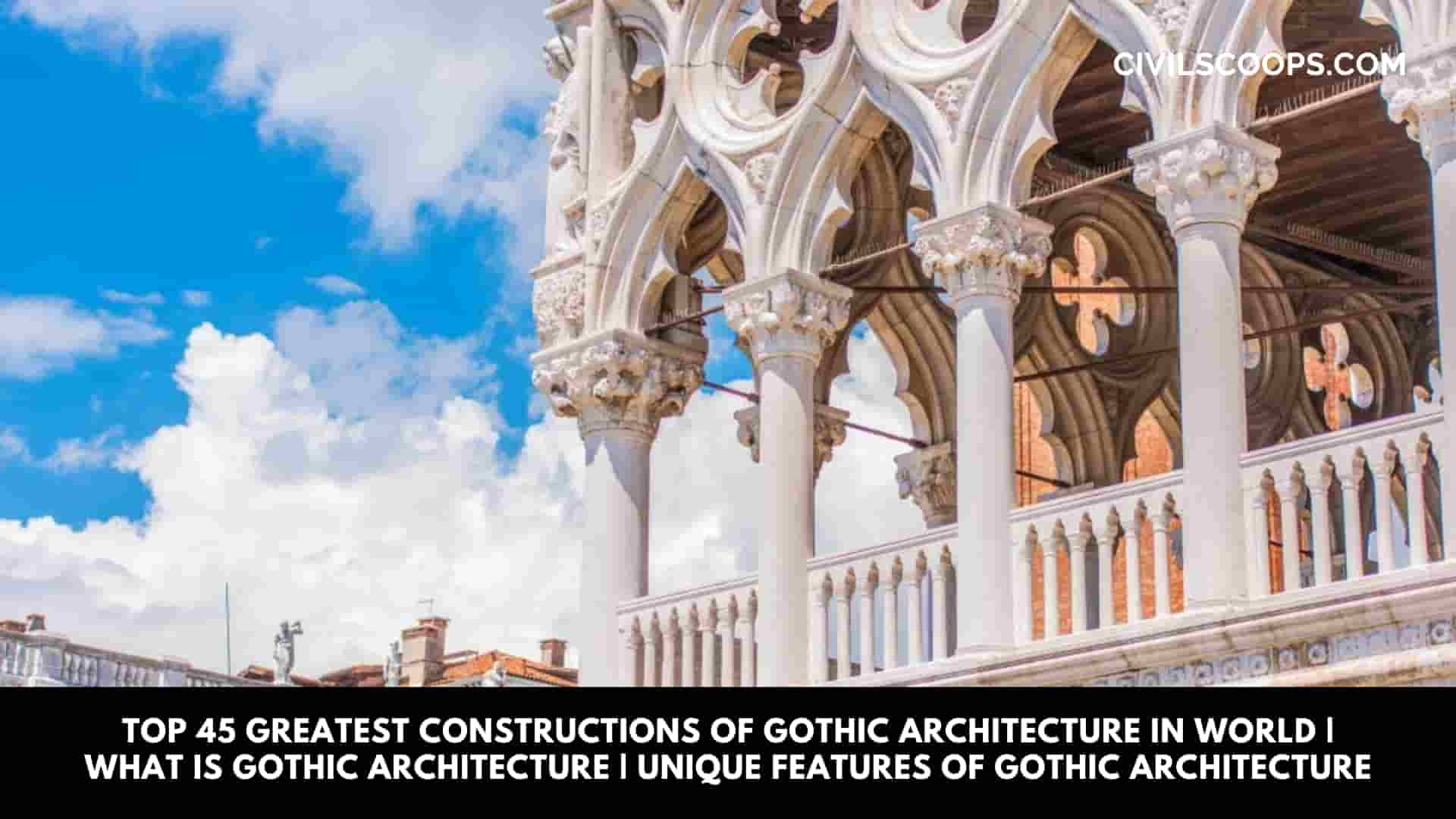
Table of Contents
Introduction of Gothic Architecture
Since the day the human left caves and started living in houses, the birth of architecture occurred. From that day to the modern era, many types of architectural style has been invented, established, and then disappeared from this world leaving different pieces of its existence at different places of the earth.
Examples of some of these architectural styles include classic architectural style, Romanesque Architecture, Baroque Architecture, Brutalist Architecture, Neo-classical Architecture, and many more. The establishment of these Antiquity architectural style buildings remains a mystery to modern architectural researchers and archaeologists even with modern technical knowledge.
One of these Architectural styles is Gothic Architecture, which with its sky-touching, massive structures, as well as breath-taking architectural wonders, has placed among the list of greatest Antiquity Architectures of the world.
What Is Gothic Architecture?
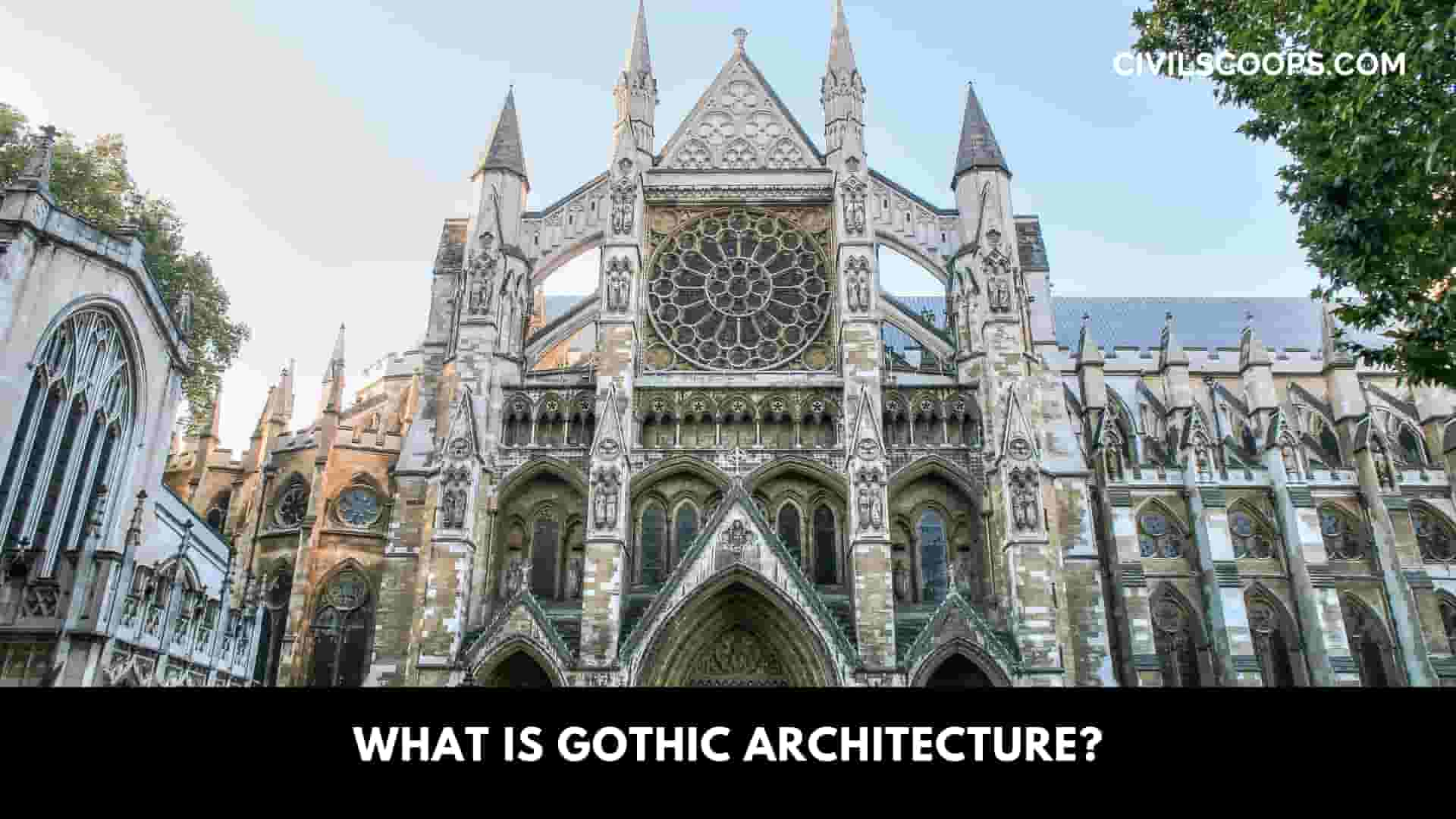
In the early 12th century, the hold of the roman empire in the Western as well as North Eastern Europe got weaker, as a result, it was followed by the fall of the roman empire in mid of 12th As the fall of the roman empire first took place in Western Europe consisting of Germany, France, Netherlands, Austria, and Switzerland; the Romanise style building started getting demolished.
On the other hand, the construction of masonry dams and other buildings got constructed using stones as their primary source, have a unique architectural style as well. This architectural style is widely known as Romanesque Architecture, which according to many researchers, started growing in the late 10th century and lasted till the beginning of the 13th Century.
As the fall of the roman empire took place, the unpopularity of Romanesque architecture also grew considerably among peoples, due to which, demolition of such structure took place.
At this time many peoples having support for Renaissance style, become ambitious to revive the historical antiquity architecture style, using the term “Gothic”.
This Gothic Architecture is a style of architecture, evolved from the late 12th century to the beginning of the 13th century, which connects Romanesque architecture with medieval/reminiscence architecture with a style of classical antiquity.
Originally started from the Eastern side of France, Gothic Architecture slowly spread, throughout the western and some portion of northeastern Europe as England.
This European style architecture lasted till the late 16th century, although surviving in the 17th and 18th centuries in some parts. Many a time this type of architecture is denoted as “Opus Francigenum” which in English means, French Work.
Unique Feature of Gothic Architecture
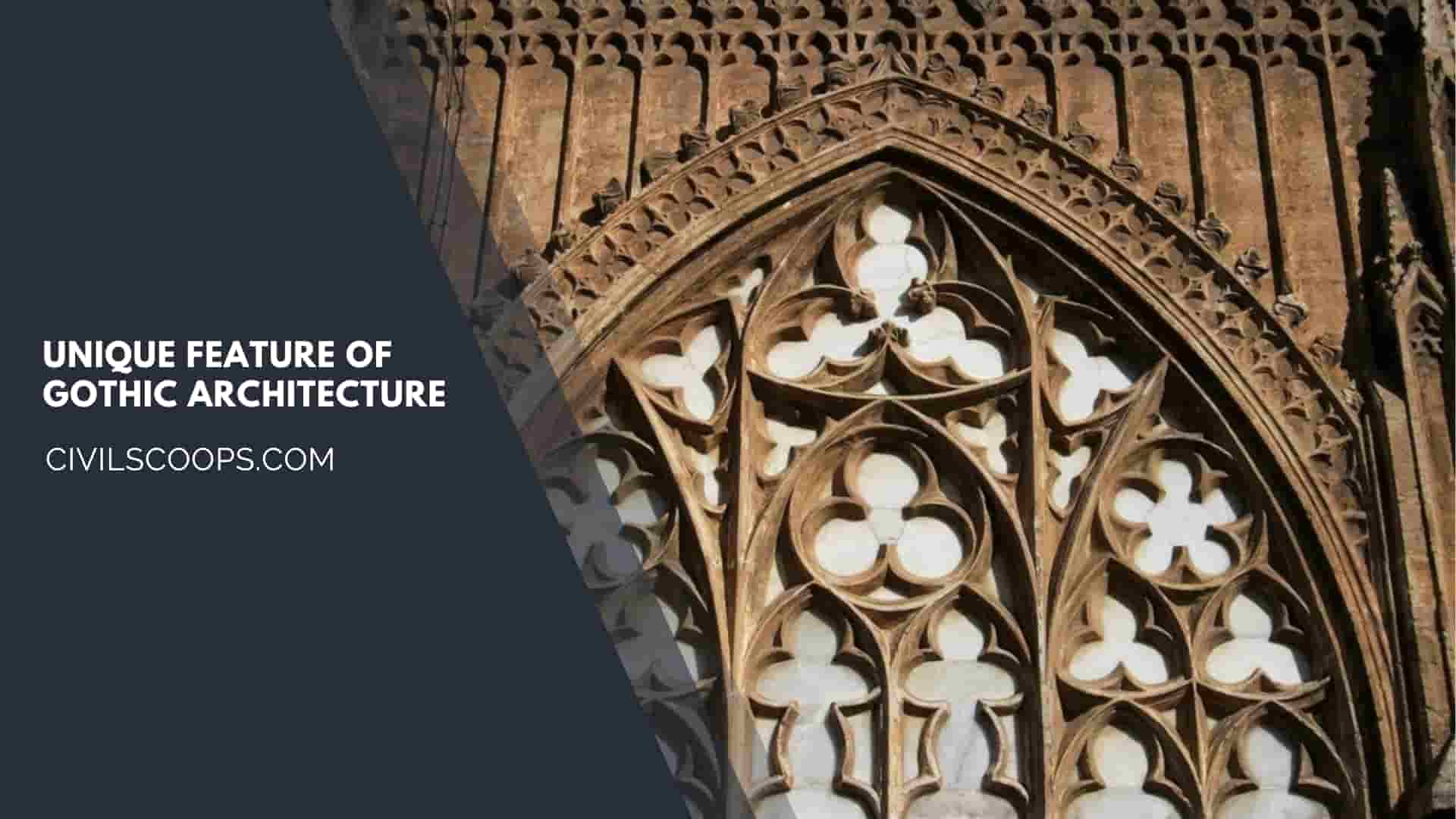
As Gothic architecture started dominating the building European Building in the late 12th century, particularly in England, France and Spain, people possessing an interest in the Antiquity style of medieval architecture, started getting attracted to it.
This is to justify the vast population of Europe and to show the capability of Gothic style architecture in the Christian church and other religious places, the architects introduced various unique features in Gothic Architecture, some of them are as follows:
1. Pointed Arch:
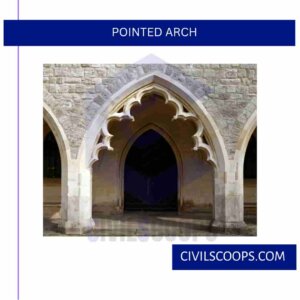
Being the primary symbol of being a Gothic architecture style building, pointed arch or Ogival arch is one of the wonders used by early European architects. Although some believe that pointed arches were invented during the Gothic Age, but this style primarily originated from Islamic Architecture.
Arches are primarily built to improve the aesthetic beauty of the building and also to transfer the load evenly to the load-bearing columns. Thus along with beauty, arches improve the structural stability of the building as well.
This concept attracted early European architects, and even though such technical concepts does not belong at that time, they were able to built pointed arch, although very much different from our modern rounded arch.
Although some iconic examples of Gothic Architecture were destroyed due to the massive earthquake that hit Europe many times, but many of them are still very intact at the present age thus living an example of historical heritages. This proves that these are arches aren’t only strong enough to carry their weight, but to also carry the load of the massive vaulted ceiling.
2. Stained Glass:
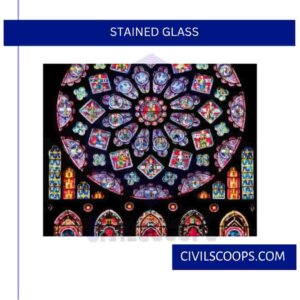
Another unique feature of Gothic Architecture is Stained Glass. These blue pieces of glass painted in various style were extremely expensive to produce and the factories that produced these glasses was also very rare.
Attached to the high rose windows, this glass was mostly used by the Catholic Church, for the purpose to tell stories of Bibles, through pictures, to largely Illiterate the European population, as per the documentary of researchers. The churches used millions of these stained blue glass pieces, thus spending an excessive amount of wealth on them. The intention was to attract the dense population of Europe.
Also Read: 10 Principles of Architecture | What Is Architecture | Why Need Design Principles in Architecture
3. Tracery:

Tracery, in simple words, is a geometrical art to divide high rose-pointed arch windows into equal proportions using generally steel wedges. Applying Tracery involved a lot of geometrical and mathematical concepts, which was done by architects with the consultation of mathematicians.
Generally, it denotes the stonework that supports the stained glass, in the windows. The concept of tracery was generated for narrowing the lateral walls, and to increase the height of the windows, which was also a unique example of Gothic style.
As the size of the glass becomes less when tracery is implemented, which can easily be carried by the stone ribs provided there, the height of the windows stopped being a limitation, thus allowing more and more height of windows. There are two types of Tracery, they are – plate tracery, which are the openings pierced on a stone slab, and Bar Tracery, being evolved from plate tracery.
4. Flying Buttress:

As the name indicates, these are the arches that are separated from the main building, thus gaining the nickname of “Flying”. In previous times normal buttress was used, which consumed more floor area to become structurally stable, and thus the free space area became low.
To avoid this, the Flying buttress has been adopted by early architects which is separated from the main building and connects the main building with columns.
The technical concept behind this is the purpose to reduce the load on the walls from the roof, by transferring them to outside buttresses and columns correspondingly.
As a result, the walls become thinner, the floor area becomes larger, and heavyweight stained glasses were easily fixed on the windows. Which also increased the height of the windows, which helped bringing more natural light to the cathedral.
5. Vertical Emphasis:
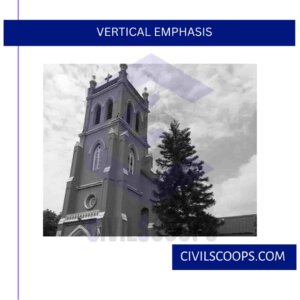
One of the most common things that can be witnessed among all Gothic architecture, is the sky touching towers and buildings. As the trend of building taller buildings become a trend in the Gothic era, the architects started to build more and more tall cathedrals and churches, resulting in a disproportionate of floor area to the height of buildings.
As of the modern age, many of them are a cultural heritage, and although witnessing tons of natural calamities, still left untouched. The towering heights of buildings were targeted to increase the popularity of cathedrals and churches among the European people.
Top 45 Constructions of Gothic Architecture in World
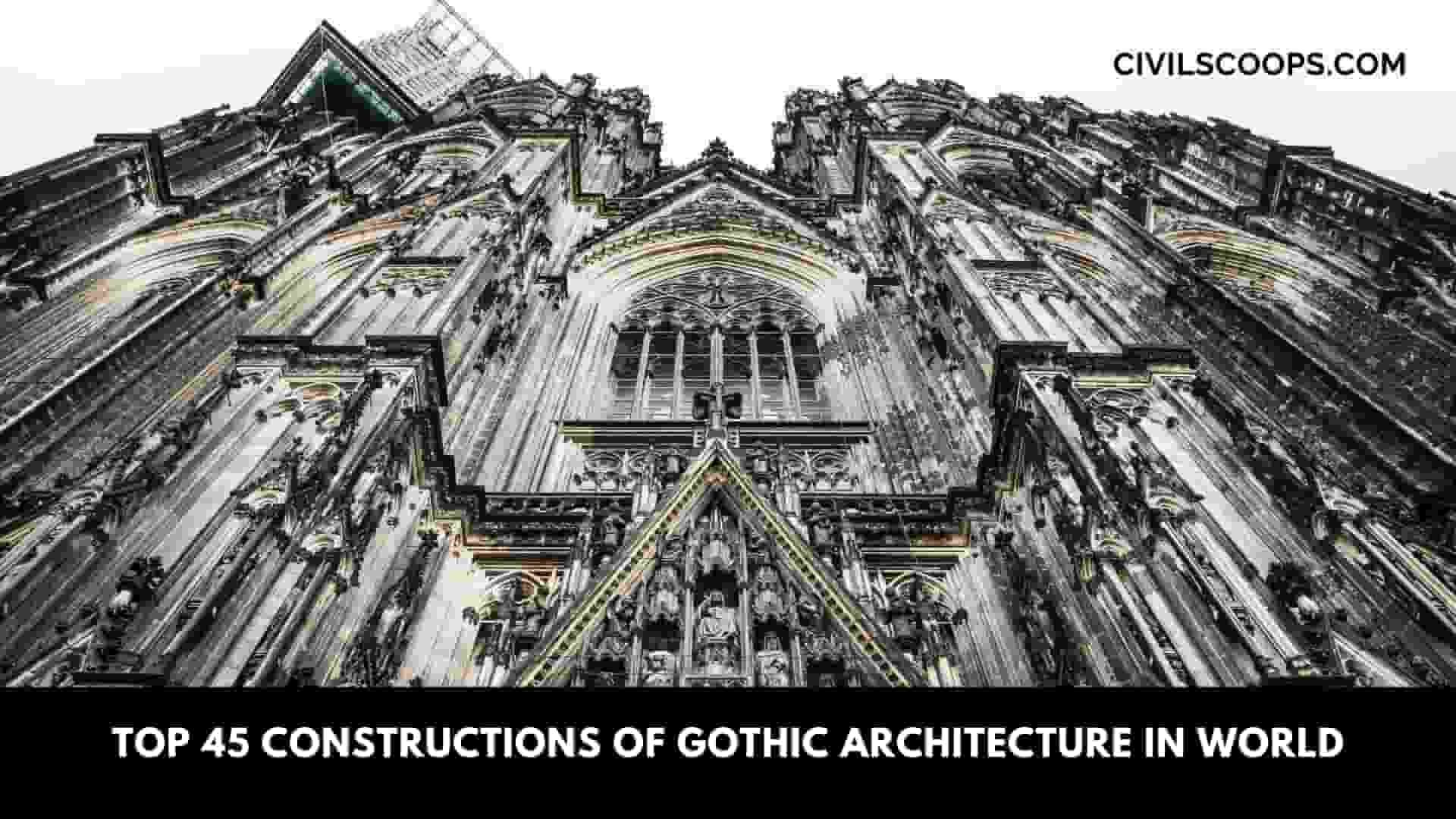
List of Constructions of Gothic Architecture in World are as follows.
1. Duomo Di Milano:

Located in Italy, it is the third-largest cathedral in the world and the largest cathedral in Italy itself. Started in the year 1386, the construction phase was very rapid till around half of the cathedral got completed, in 1402. The construction then stalled for some time due to lack of funds, and again gain speed in the 17th Due to the effect of world war 2 and the aerial bombing of Milan, construction was again halted.
Completed in 1965, it took around 600 years to complete. Having a height of 108 meters, the specialty of this Cathedral was the implementation of Spires(total 135 spires), which increased the aesthetic beauty and was intended for structural purposes as well.
2. Notre Dame De Paris:

One of the best-known churches in Europe is Notre dame Cathedral. Situated in France, the construction started in the 12th century and finished in mid 14th During the French revolution, attempts were made to demolish this catholic church, which resulted in some damages. Reconstruction work was completed in 1845.
In World War 2, this cathedral incurred severe damages, especially to its stained glass frames, as restoration, modern geometrical design has been incorporated in some places. Having a height of 68m, this cathedral again got damaged in 2019 having a major fire breaking out, damaging the major stone vaulted ceiling. Restoration work is yet to complete.
3. Cologne Cathedral:

Cologne Cathedral is an iconic example of the German Gothic style. Started in the late 12th century, it got abandoned in the early 15th Left unfinished for over 350 years, the work started again in 1840. During world war 2, it witnessed several bombing and tank hits for which it sustained several damages. Restoration work is yet to complete.
4. Basilica of Saint-Denis:
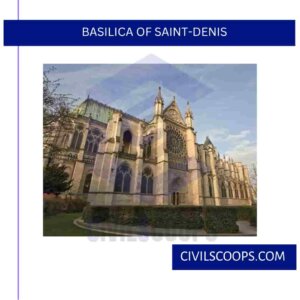
Located in France, this structure is an example of Early Gothic architecture. Although it does not feature stained glass or a tall tower, but it does consist of high rose windows and stone vaulted ribs, making it an example of Early Gothic Architecture. The basilica is not only famous for its Pilgrimage, but it also holds the resting place of many French Kings.
5. Canterbury Cathedral:

Located in England, Canterbury is one of the oldest Churches which were built before the Gothic style even got famous. As the main church was established following a rapid construction of 7 years, some portion of it got destroyed in WW2 as well. Restoration work has been done after that.
6. Rheims Cathedral:

Notre Dame de Reims is another one of the famous cathedrals in France, built around the early 13th With its High Gothic style featuring flying buttress, stained glass windows, it is visited by a huge crowd every year. At present, it lives for the coronation site of early French kings.
7. Florence Cathedral:

The Duomo, is the one dominating the skies of Florence. With its unique feature of the Biggest ever brick dome constructed, it remains as a cultural heritage on the history of Italy. Built-in 16 years starting from 1420, the structural integrity is still a mystery to many of the researchers even now.
8. Charteas Cathedral:
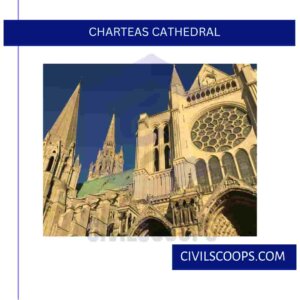
One fine example of French Gothic Architecture, Charteas cathedral is said to be the most preserved cathedral in Europe. Constructed in the late 12th century, it is awarded as one of the UNESCO World Heritage site in 1979. Apart from a cultural pilgrimage, it holds a great attraction from Tourists as well.
9. Salisbury Cathedral:
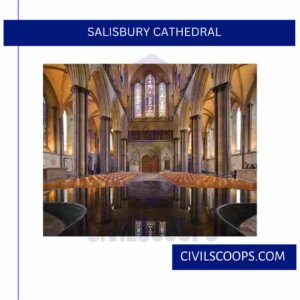
Salisbury cathedral is said to be the blessed cathedral of Saint Mary. As the finest example of English Gothic Architecture, it holds the record for tallest ever spire in the UK, having a height of 123 meters.
Apart from being very beautiful, it holds a greater historical heritage, as one of the original copies of Magna Carta, a world-known royal charter issued and signed in 1915 to stop the molding of law into royals hands, is housed here.
10. Amiens Cathedral:

Being the tallest cathedral in France, Amiens Cathedral is one iconic example of High Gothic style. Completed in the year 1288, it features Ogival pointed arch and flying buttress at the entrance. It is said to be the house of the head of John the Baptist.
11. Biserica Neagra:
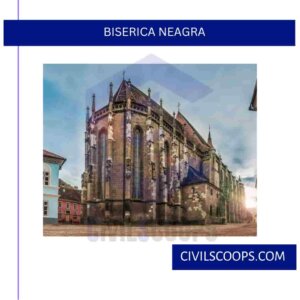
Biserica Neagra, or the Black church is an important place of worship, also indicates the high gothic architectural movement in Germany. Placed in Basov, Transylvania, This church were build in the late 14th century, which have height of about 69 meters. It is one of the largest and important place for Lutheran worship.
12. Frankfurt Cathedral:

Frankfurt Cathedral is one of the major religious buildings placed in Germany. Although not a cathedral, it is, many times denoted as a Kaiserdom(in English, means, Great Imperial Church). Destroyed and damaged many times, the current church is the third church built on the same site.
It played a great significance in the 19th century, especially in World War Two. This church specially features rose windows with high pointed arch. Construction materials were mostly bricks and marble.
13. Church of Our Lady:
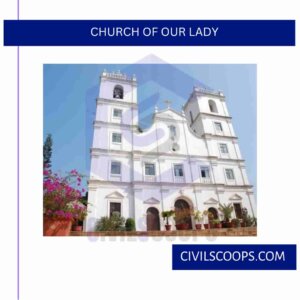
Located in Burges, Belgium, it is constructed between 13th century to 15th Having a tower height of 115 meters, it remains the tallest cathedral in Belgium, the second tallest brick tower, and the largest brick tower in the world. During the French Revolution, it acted as an iconic cultural heritage among all the Gothic structures in France. Construction materials used were mostly Brick and white marbles.
14. Stephen Church:

St. Stephen Church is one of the iconic churches and an important historical heritage as well. Located in Vienna, Austria, it resembles a combination of Romanesque and Gothic Architecture. Original ground-breaking started in mid 12th century, it features flying buttress and pointed arch at various points of the structure.
The height of the tower is around 136 meters, which was saved from the attacks of World War Two when the German army retreated to destroy the Cathedral. It consists of two spires, one directing north and another directing south.
15. Leuven Townhall:

Constructed in the late Gothic era of 15th century, Leuven town hall is famous for its highly complex architecture and spires. Constructed in Belgium, it survived the effect of World War First but later stuck with the bombing of world war 2. Renovation work went after that, which were completed in 1983.
16. Belfry of Ghent:

One of the most eminent structures, it remains as the tallest one in Belgium having a height of 91 meters. Built-in in 14th century, Belfry of Ghent is one unique example of Gothic-style architecture.
17. Zagreb Cathedral:
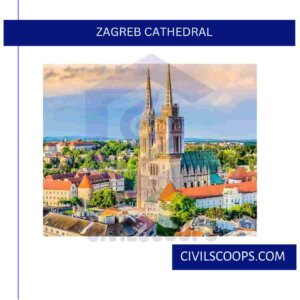
One of the famous cathedrals in Croatia, Zagreb cathedral is famous for its exterior gothic style architecture and a very valuable piece. It is heavily damaged in invasion as well as 1880 Zagreb Earthquake. Reconstruction work is yet going on.
18. Sophia Cathedral:

Located in Ukraine, St. Sophia cathedral has obtained the position of UNESCO world heritage site. Generally a combination of Baroque and Gothic style architecture, St. Sophia cathedral is an iconic structure to date. Construction started in 1209 and end in the early 14th century. Although in the 16th century, it was captured by the Ottomans and converted into a mosque in 1954.
19. Saint Vitus Cathedral:

One of the most prominent structures in Prague, St. Vitus cathedral used to house the people of the Czech Republic. Constructed in mid 14th century, Saint Vitus cathedral highly features a Flying buttress and tall spires at the front of the structure. It is used as a pilgrimage as well as a resting place of many roman empires.
20. Lincoln Cathedral:
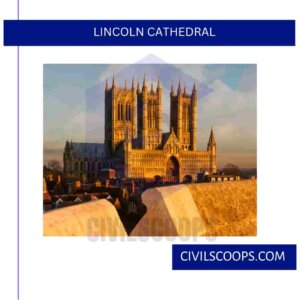
Lincoln Cathedral is regarded as one of the most precious architectural pieces in Britain. Regarded as a combination of Romanesque and gothic style architecture, the Lincoln cathedral was constructed at 1088.
It is the third-largest cathedral in Britain and until 16th century, it was the highest structure until its central spire collapsed. With it’s right rose windows and rib vault inside, it particularly attracted research scholars and tourists.
21. Wells Cathedral:

An unique example of Early gothic architecture, Wells cathedral remains as a very famous tourist place in England. Although it does not feature high spires, it consists of pointed arch and stone vaulted ribs inside of the cathedral. It is very unique in it’s style and the exterior architecture is regarded as very expensive, which also attracts a lot of tourists.
22. Santa Maria De Valoni:
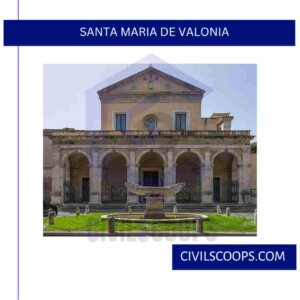
Monastery located in Catalonia, it is also regarded as a priceless architectural piece in Spain. Built in the early 12th century, it represents the transition of Romanesque architecture to Gothic architecture. It is officially made a Spanish national monument in the 20th
23. Mir Castle:
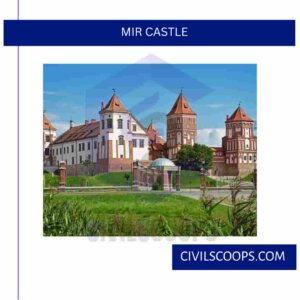
Located in Belarus, Mir Castle was primarily constructed in the late gothic era of the 16th It features a combination of Gothic and Renaissance architecture, which succeeded Gothic style. Abandoned in 1717, reconstruction work again began in the early 20th century, after which it is captured by the soviet union in 1939.
24. Duomo Di Orvieto:
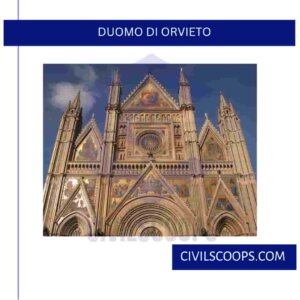
Located in Umbria, Italy, Orivieto Cathedral is a cultural heritage of roman catholic. Although started in Romanesque style, later it succeeded Gothic architecture featuring pointed arch at various entrances. It also features high geometrical tracery at windows. It was generally built in the 14th
25. Church of Our Lady at Breda:

Located in Breda of Netherlands, this cathedral features a high gothic style. Having a tower height of 97 meters, the construction began at 1410 and was completed in 1957. It highly features a pointed arch and the exterior consists of highly complex architectural pieces.
26. Old Town Bridge Tower:
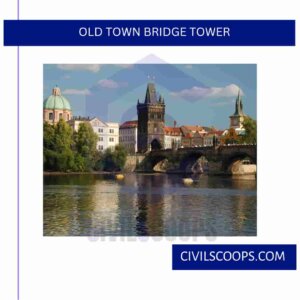
Constructed in mid 14th century, Oldtown bridge tower remains as an iconic example of the Gothic movement in the Czech Republic. Under the rule of King Charles IV, this architectural masterpiece was designed by Petr parler. The bridge consists of a Pointed arch at the entrance.
27. Westminster Abbey:
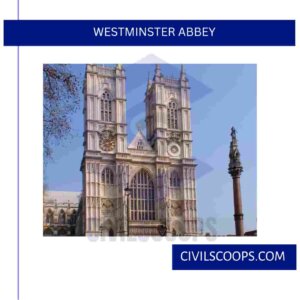
One of the most visited tourist places in London, England, is the abbey church located in Westminster. For many years, it served as the combination site of England royals. It consists of two towers, each having a height of 31 meters.
Construction started at early 11th century in the early gothic era, for which a transition of Romanesque style to gothic style can be witnessed in this structure. It took around 960 years to built. It features a logical arch at both the towers as well as in the entrance.
28. Hunyadi Castle:

Situated in Hunedoara in Romania, it records the transition of gothic style to Renaissance style. Named as Corvin castle as well, it features unique styles very much different from the High gothic era.
It records several towers height of which is not too much, and the exterior of the castle is built with primarily stonework. Construction started in the early 15th century, it is an iconic structure of Romania.
29. Zvolen Castle:
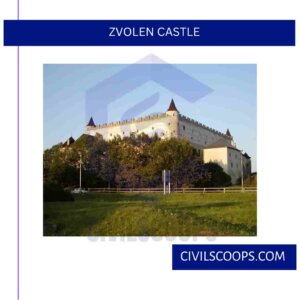
One of the iconic late gothic examples of Russia, is Zvolen Castle located in Central Slovakia. Similar to the Corvin Castle located in Romania, this castle is a combination of gothic and Renaissance-style architecture. A little of Italian taste has also been incorporated into the castle.
30. Anne Church:

One of the most beautiful roman catholic churches in Lithuania is St. Anne church, located in the town of Vilnius. Due to its high aesthetic exterior beauty, it is placed as a world heritage site by UNESCO as a carrying a great historical emphasis.
The church was built in the late gothic era of the early 16th century. Construction materials primarily used were brick. It highly features ogival arches at various towers of the Church.
31. Siena Cathedral:

Denoted as “Duomo di Siena”, Sienna cathedral is one of the most prestigious sites and has a unique cultural heritage among all the cathedrals in Italy. Located in Siena, it features the style of the early gothic era, which is a combination of Romanesque and gothic styles. Constructed in the early 13th century, Siena Cathedral become one of the UNESCO World Heritage Site in 1995.
32. Mary’s Cathedral:

Saint Mary’s Basilica, is one of the finest examples of gothic architectural movement in Poland. Built in the early 14th century, it features exposed brick gothic architecture, one of the few brick gothic buildings ever existed.
Consisting of one spire, the tower heights about 80 meters. Awarded as a World Heritage Site, this Polish Wonder is often regarded as an architectural model for modern architecture.
33. Wawel Cathedral:

Consisting of a unique design, this cathedral is more than 900 years old. Built-in the 14th century, it acted as a traditional site for Polish Monarch Coronations.
The interior of the cathedral is featured with pointed arch and the walls are carved very beautifully. Apart from the interior, it consists of spires and domes as well. Regarded as a Polish Natural Sanctuary, it is one fine example of Gothic architecture.
34. Barbara’s Church:
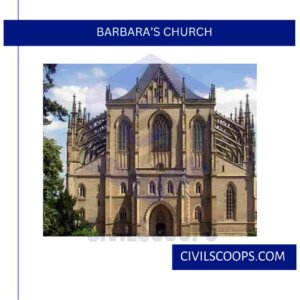
St. Barbara Church is one of the most famous Roman Catholic church in central Europe, and most visited by tourists as well. Although construction began in the late 14th century, It was not completed until 1905.
The original plan was around twice the present cathedral, but due to the less productivity of the country’s silver mines, it became a three-peaked roof.
Although most of the church completed baroque style, gothic style can be witnessed in many locations, such as flying buttress. Thanks to it’s large popularity, it has become a world heritage site by UNESCO.
35. Rectors Palace:

Constructed in between 14th & 19th century, it is located in Croatia. As soon as it started constructing, it is followed by a gunpowder explosion which necessitated it to implement some Renaissance and baroque style, thus one can witness a combination of three architectural style at one place.
36. Roskilde Cathedral:

Located in Roskilde, Denmark, Roskilde cathedral have gained popularity for being the first-ever gothic cathedral ever built in brick. Constructed in 13th century, it remained as an official burial ground for Danish Monarchs.
Featuring Gothic as well as Romanesque style, it encouraged the construction of brick gothic cathedrals in Northern Europe. Consisting of two towers and two spires, the height of it is around 72 meters
37. Brussels Town Hall:

Located at the centre of Brussels, Belgium, Brussels town hall is regarded as one of the masterpieces of high gothic style architecture. Started in 1402, the construction was very rapid, thus getting completed in mid 15th Having a tower height of 96 meters, it is listed as a World Heritage Site by UNESCO.
38. Bath Abbey:
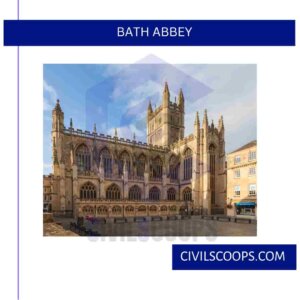
One of the eminent examples of Gothic Architecture, Bath a bevy is located in Bath of England. It was reconstructed many times, the latest reconstruction was in between the 12th and 16th centuries, in which Gothic style was incorporated. Being a grade First listed building, it features high arches as well thin walls with rose windows. The interior consists of very beautiful sculptures.
39. Palace of Westminster:

Palace of Westminster, Westminster Abbey is a significant Gothic style architecture in England. One of its kind, it generally inspires perpendicular style gothic architecture in particular.
It has been well preserved by the government for being a traditional coronation site of many English Monarchs. Often called “Britain’s Valhalla”, Westminster Abbey has held a place in UNESCO world heritage site.
40. Strasbourg Cathedral:
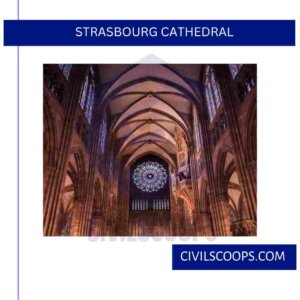
Having crowned as “world tallest building” at 18th century, Strasbourg Cathedral is originally located in France. Although due to being controlled by Germany at some point, a mixed culture of Germany and France can be witnessed here. Having some elements of Romanesque style as well, the building is of High Gothic style.
The most astounding thing about this cathedral is its intricate stonework on the exterior. A very aesthetic pointed arch and accurate tracery can also be witnessed here. Passed through many turmoils, Strasbourg Cathedral remains an iconic example of the High Gothic style in France.
41. Gloucester Cathedral:

Constructed in the 11th century, Gloucester Cathedral is located in West England. The most unique feature of thus cathedral is highly decorated interior ceiling.
This amazingly decorated ceiling can often be a maze which consists mostly of stone ribs. Having a height of about 26 meters, it is a very popular tourist place.
42. King’s College Chapel England:
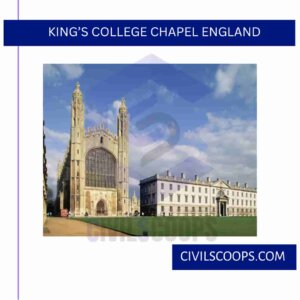
One of the finest Examples in a late gothic era is King’s college chapel located in England. Constructed in the late 15th century, the length of this chapel is about 300 feet.
It features Stainless glass windows, a fan-vaulted ceiling, and it’s highly decorated interior ceiling. As being a focal point of Cambridge University, it is a very famous tourist place.
43. Doge’s Palace:
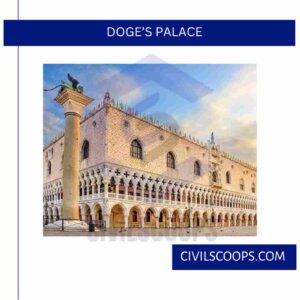
As during the Gothic era, the chief magistrate of the Republic of Venice is known as Doge. A palace for these rulers were built in excellent gothic style, although a combination of Renaissance style can be witnessed as well. It featured several domes as well as a high-pointed arch in a serial manner.
44. Barcelona Cathedral:

Constructed in mid 13th century, Barcelona Cathedral is one of the finest examples of the high gothic movement in Spain. It particularly features in stone vaulted ceilings, and high rose windows with stained glass. Its interior is extremely decorated for which it is one of the famous examples of gothic architecture in the world.
45. Jeronimous Monastery:
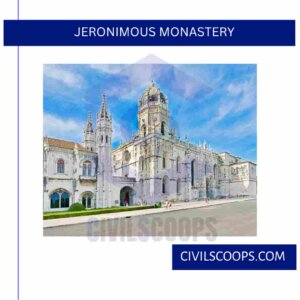
Located in Portugal, it is regarded as an important cultural heritage among all the Monasteries. With its highly decorated stone vaulted ceiling, it represents the implementation of high gothic style architecture. This monastery is famous as it’s highly represented in artistic way the monastery is being used for, that is praying.
[su_box title=”FAQ” style=”default” box_color=”#333333″ title_color=”#FFFFFF” radius=”3″ class=”” id=””]
Gothic Architecture
Gothic architecture, architectural style in Europe that lasted from the mid-12th century to the 16th century, particularly a style of masonry building characterized by cavernous spaces with the expanse of walls broken up by overlaid tracery.
What Are the Characteristics of Gothic Architecture?
The main characteristics of Gothic architecture include pointed arches, stained-glass windows, flying buttresses, ribbed vaults, and spires.
What Are the Three Basic Elements of the Gothic Style?
There are three things that make Gothic architecture Gothic:
- The pointed arch.
- The ribbed vault.
- The flying buttress.
What Makes Gothic Architecture Unique?
It is characterized by vertical proportions, pointed arches, external buttressing, and asymmetry. At great gothic cathedrals like Chartres in France and Salisbury in England, pointed arches allowed for heavy stone ceiling vaults despite the fact that the walls were pierced for huge stained-glass windows.
Is Gothic Architecture Still Used Today?
The Gothic style has influenced architecture for over 700 years. With its trademark pointed arches it continues to influence modern architecture. Stained glass windows; high, arched ceilings; and gargoyles are used in a variety of ways today. Some things never go out of style.
What Inspired Gothic Architecture?
The architecture that informed the Gothic period drew upon a number of influences, including Romanesque, Byzantine, and Middle Eastern.
What Defines Gothic Architecture?
The gothic style of architecture originated in Europe’s Middle Ages. It is characterized by vertical proportions, pointed arches, external buttressing, and asymmetry.
What Is Gothic Architecture?
Gothic architecture is an architectural style that was prevalent in Europe from the late 12th to the 16th century, during the High and Late Middle Ages, surviving into the 17th and 18th centuries in some areas. It evolved from Romanesque architecture and was succeeded by Renaissance architecture.
Duomo Di Milano
It is famous for its contrasting styles, such as Romanticism, Gothic Revival, and Gothic, Flamboyant, which display the work of various art legends from different generations. Duomo Milan is famous for its collection of 4000 statues, gargoyles, and figures.
Notre Dame De Paris
Notre-Dame de Paris, referred to simply as Notre-Dame, is a medieval Catholic cathedral on the Île de la Cité, in the 4th arrondissement of Paris. The cathedral, dedicated to the Virgin Mary, is considered one of the finest examples of French Gothic architecture.
Cologne Cathedral
Cologne Cathedral is a cathedral in Cologne, North Rhine-Westphalia belonging to the Catholic Church. It is the seat of the Archbishop of Cologne and of the administration of the Archdiocese of Cologne.
Basilica of Saint Denis
The Basilica of Saint-Denis is a large former medieval abbey church and present cathedral in the commune of Saint-Denis, a northern suburb of Paris.
Canterbury Cathedral
Canterbury Cathedral in Canterbury, Kent, is one of the oldest and most famous Christian structures in England. It forms part of a World Heritage Site. It is the cathedral of the Archbishop of Canterbury, currently Justin Welby, leader of the Church of England and symbolic leader of the worldwide Anglican Communion.
Rheims Cathedral
Notre-Dame de Reims, is a Roman Catholic cathedral in the French city of the same name, the archiepiscopal see of the Archdiocese of Reims. The cathedral was dedicated to the Virgin Mary and was the traditional location for the coronation of the kings of France.
[/su_box]
[su_note note_color=”#F2F2F2 ” text_color=”#333333″ radius=”3″ class=”” id=””]
Like this post? Share it with your friends!
Suggested Read –
- What Is Spalling Concrete | Causes of Spalling in Concrete | Repairing Concrete Spalding
- What Are Curb and Gutter | Types of Curb and Gutter| Advantages & Disadvantages of Curb and Gutter
- Functions of Foundation | Requirements of Good Foundation | Types of Foundation | Types of Shallow Foundations | Types of Deep Foundations
- Introduction of Bamboo | Advantages & Disadvantages of Bamboo | Bamboo Uses in Construction | Properties of Bamboo as a Construction Material | Bamboo Architecture
- 9 Curing of Concrete Methods | What Is Curing of Concrete | Why Curing Is Important | Minimum Curing Period for Concrete Cement | How Long Does It Take for Concrete to Dry
[/su_note]
Originally posted 2023-05-27 07:24:26.
